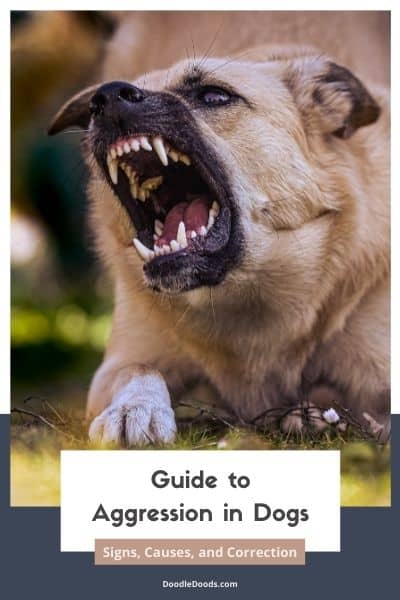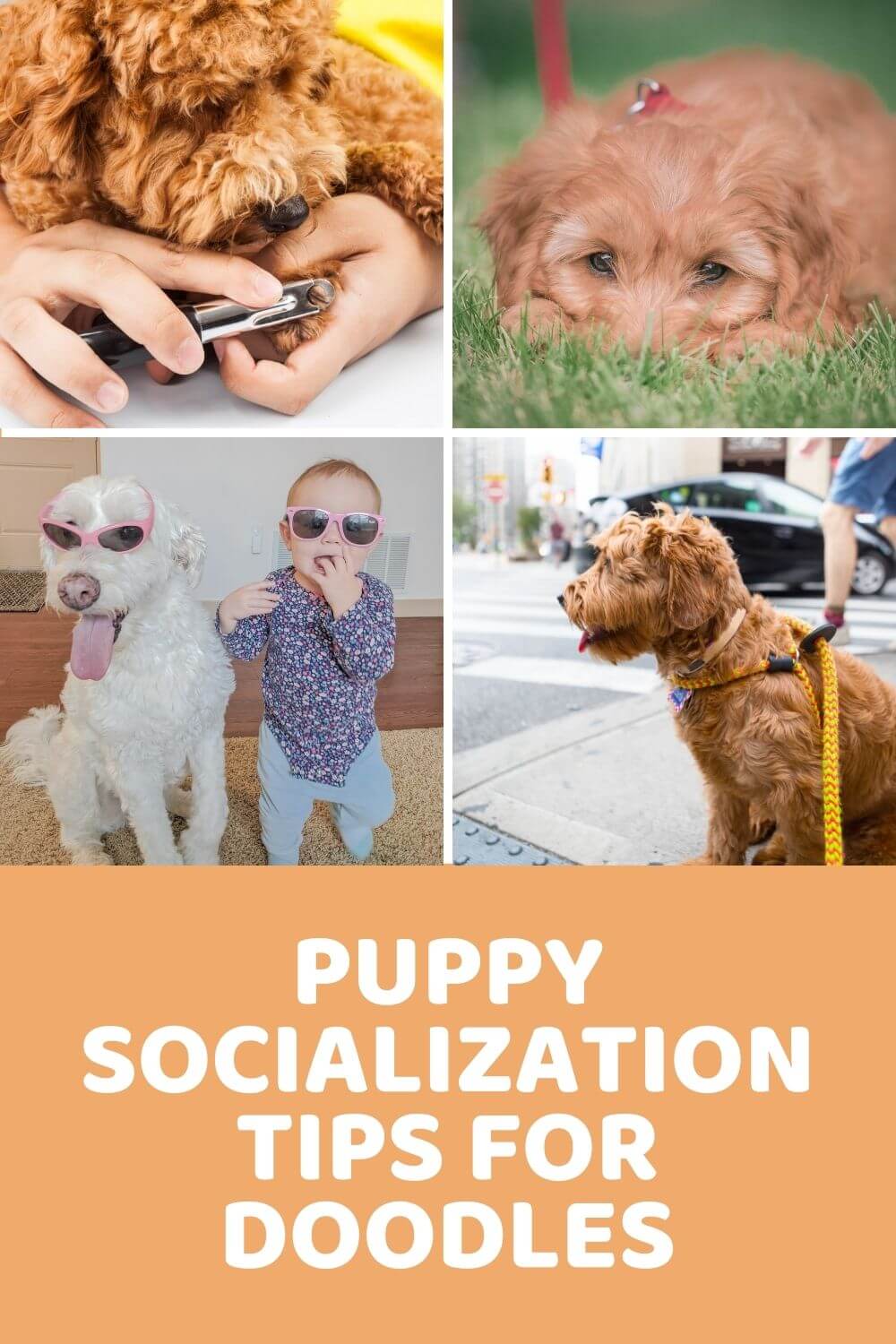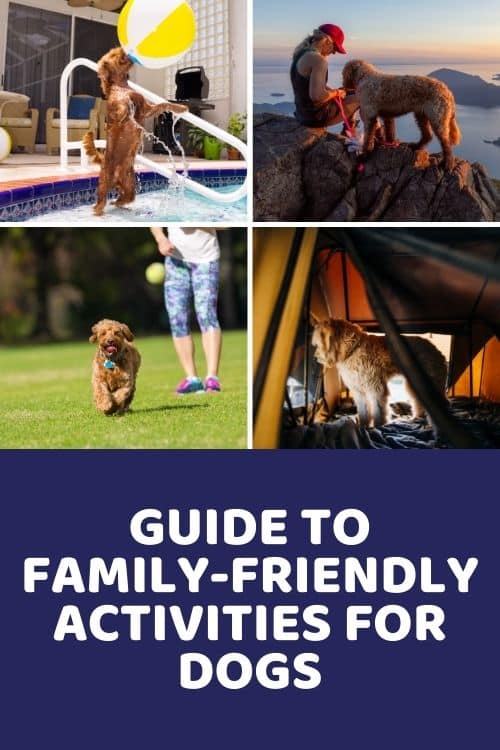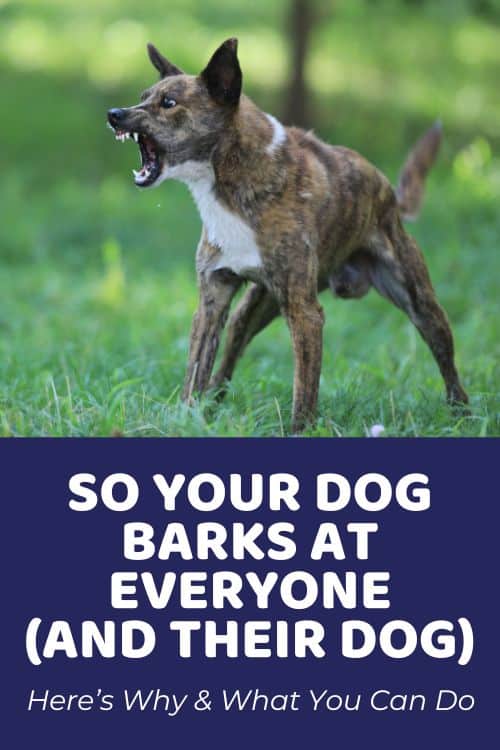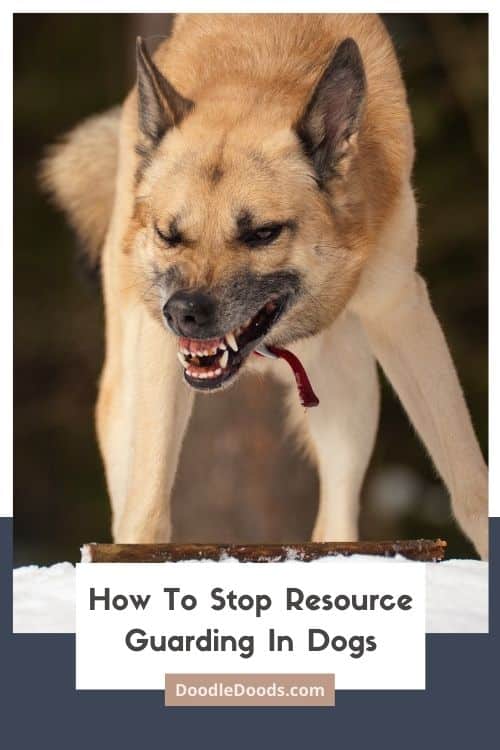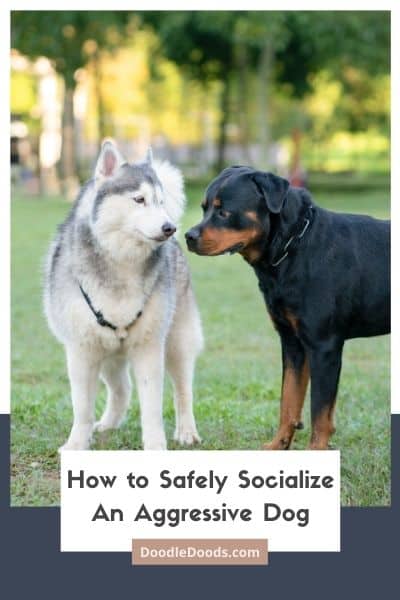Why is my dog being aggressive all of a sudden? If your dog has suddenly started exhibiting aggressive behavior, it can be a worrying and confusing situation. Aggression in dogs can take many different forms, ranging from growling or barking to biting or lunging. But why does this happen?
Table of Contents
- What Is Dog Aggression?
- Aggressive Dogs vs. Aggressive Behavior In Dogs
- What Are The Common Signs Of Dog Aggression?
- Causes Of Sudden Aggression In Dogs
- How Do I Stop My Dog From Being Aggressive?
- The Dos And Don’ts Of Correcting Dog Aggression
- Why Is My Dog Being Aggressive All Of A Sudden: Frequently Asked Questions
- Why Is My Dog Being Aggressive All Of A Sudden: Final Thoughts
What Is Dog Aggression?
Dog aggression is an aggressive behavior that definitely does not go unnoticed. It includes growling, barking, snarling, snapping and even biting. Basically, anything that’s out of the ordinary and clearly hints that your dog is stressed and distraught. Dogs may display aggression towards other dogs, people or animals. Additionally, aggressive behavior can sometimes be seen in playtime as well.
In this article, we’re going to explore why dogs may experience sudden aggression and what the main triggers are. We’ll also talk about the common signs of dog aggression and the best ways to stop and correct it.
If you notice sudden aggression in your dog, it’s important to take action as soon as possible by identifying why they are exhibiting this type of behavior. Only then can you start taking steps to keep this from happening. By understanding why your dog is being aggressive all of a sudden and addressing any underlying issues, you can definitely help prevent future incidents from occurring.
Table of Contents
- What Is Dog Aggression?
- Aggressive Dogs vs. Aggressive Behavior In Dogs
- What Are The Common Signs Of Dog Aggression?
- Causes Of Sudden Aggression In Dogs
- How Do I Stop My Dog From Being Aggressive?
- The Dos And Don’ts Of Correcting Dog Aggression
- Why Is My Dog Being Aggressive All Of A Sudden: Frequently Asked Questions
- Why Is My Dog Being Aggressive All Of A Sudden: Final Thoughts
Aggressive Dogs vs. Aggressive Behavior In Dogs
It is important to distinguish between aggressive behavior in dogs and aggressive dogs. Dogs may display certain behaviors, such as growling or barking, that are seen as offensive by people but which are actually natural for the dog. That’s especially for dogs who have not received proper training and socialization from their human parents. These types of behaviors should not be labeled as “aggression” and instead seen as communication methods used by the dog.
Aggressive dogs are those who consistently display aggressive behaviors regardless of the situation. These dogs tend to have a severe underlying health issue or mental health issue that needs to be addressed. On the other hand, aggressive behavior in dogs is often a reaction to something else and can usually be corrected with the proper training and understanding of why it occurred in the first place.
What Are The Common Signs Of Dog Aggression?
Common signs of dog aggression include growling, barking, lunging at people or objects, snapping at hands or feet (when no treats are present), and even biting. Dogs may also display more subtle forms of aggression such as lip licking, staring, or freezing. You may also notice your dog having a rigid body, yet they’re quickly wagging the tail.
If your dog is exhibiting any of these behaviors, it is important to take action immediately in order to manage the situation before it escalates into more serious aggression. That’s why learning your dog’s overall behavior and body language is so vital, as you’ll be able to detect any aggression from a mile away.
By the way, dogs may display other physical signs when they are feeling anxious or stressed, such as cowering, hiding, or panting heavily. These behaviors should also be taken seriously and addressed, so that your pup can become more comfortable in situations where they may feel threatened.
Causes Of Sudden Aggression In Dogs
It is important to understand why some dogs may become aggressive so that you are better equipped to manage the situation. Dogs can be aggressive for many different reasons. Some dogs may become aggressive when they feel scared or threatened, while others may become aggressive when they’re trying to protect their family or territory. Whatever the cause, it’s important to know how to deal with an aggressive dog before things get out of hand.
The different types of sudden aggressions in dogs include:
- Territorial aggression
- Protective aggression
- Possessive aggression
- Social aggression
- Fear aggression
- Defensive aggression
- Frustration aggression
- Health-related aggression
- Sex-related aggression
What Are the Main Triggers Of Dog Aggression?
But what triggers dog aggression? There are several common triggers for sudden aggression in dogs, including fear, anxiety, illness or pain, frustration with an activity or interaction, lack of proper socialization or training from an early age, a desire to protect resources (such as food or toys), and even boredom.
For instance, dogs may become aggressive if they’re in pain or experience discomfort. If your dog has never behaved aggressively before, an underlying medical issue could be the reason why they’re behaving differently.
Dog aggression can even be triggered by changes in their environment or perceived threats. For example, if a new person enters the house, a dog may feel threatened and display aggressive behavior as a way of protecting themselves. Other common triggers can include unfamiliar animals, loud noises, and seeing other dogs on walks. Additionally, certain breeds can be more prone to displaying aggression due to their genetics or temperament.
Why Is My Dog Aggressive Towards Other Dogs?
In addition to the triggers mentioned above, some dogs may exhibit aggression towards other dogs. There are many reasons why a dog can become aggressive towards other dogs. Territorial aggression is the most common one of them. It occurs when a dog perceives an unfamiliar dog as a threat to its space or resources (such as food or toys).
Dogs may also become aggressive if they haven’t been socialized enough when they were young. Or if they are feeling fearful or anxious. Other causes of inter-dog aggression include lack of proper training from an early age, dominance issues, and health problems. In fact, in some cases, dog aggression can be fixed quite effectively with a spay or neuter surgery.
How Do I Stop My Dog From Being Aggressive?
Schedule A Vet Visit
When you find yourself asking the question “Why is my dog being aggressive all of a sudden?“, it’s time to schedule a vet check-up. That’s because many times, aggressive behavior in dogs is actually caused by an underlying health issue. Random aggression in dogs is very commonly a by-product of the severe pain that they have to endure on a daily basis. That’s simply their way of communicating what they’re struggling with.
By ruling out any health concerns, you can help to address the aggression and get your pup back to their happy, healthy self. There are a variety of different health issues that can cause dog aggression. So, it’s important to get your dog checked by a veterinarian as soon as you notice any sudden changes in behavior.
Some common health issues that may lead to sudden aggression in dogs include:
- Ear infections
- Tooth decay or gum disease
- Neurological problems
- Joint pain or other orthopedic problems, including hip and elbow dysplasia
- Hormonal imbalances and diseases
- Liver disease
- Kidney disease
- Cancer
Socialize Your Dog
The key to preventing and correcting dog aggression is to make sure your dog gets plenty of socialization. Dogs that are well-socialized are less likely to become aggressive. That’s because they have learned how to interact with other dogs and people in a positive way. This will also help a puppy to grow into a confident adult dog that doesn’t get stressed, fearful, or anxious in different situations.
Socialization should start as early as possible, and should include exposure to a variety of different people, animals, and environments. This will help your dog learn how to properly interact with others and will help curb any aggressive tendencies. For this reason, responsible dog breeders start with regular body handling and socialization exercises from the moment puppies are born!
If your dog has not been properly socialized, you can take them to obedience classes or puppy socialization classes. These classes will help your dog learn how to behave around other dogs and people, which can help reduce the likelihood of them becoming aggressive later in life. However, make sure that your pup has received all of its vaccinations so that they’re safe to meet other dogs.
Positive Reinforcement Training
When it comes to preventing and correcting dog aggression, positive reinforcement is one of the most effective tools you have at your disposal. By providing treats or verbal praise for good behavior, you can help your dog learn what is expected of them and provide positive reinforcement for appropriate behavior. This can be an effective way to stop aggressive behavior in dogs before it becomes a problem. Additionally, positive reinforcement can also help correct already existing aggressive behaviors.
It’s important to be consistent with your rewards, however, and to provide rewards immediately after desired behaviors occur. This will help your dog associate good behavior with positive outcomes and increase the likelihood of them displaying the desired behavior in the future. In contrast, unwanted behaviors should be ignored. This way, your pup learns which behaviors get your attention and praise, and which do not.
If you’re not as familiar with different training methods or simply would prefer some help along the way, you could either work with a professional dog trainer or enroll your pup in an online puppy school. For instance, this puppy curriculum created by Baxter & Bella is a true gem.
Be Consistent And Establish Clear Boundaries
It’s also important to be consistent with your rules and boundaries so that your dog knows what is expected of them. Dogs thrive on routine and stability, so changing the rules frequently can lead to confusion and frustration. Establishing clear boundaries will help your dog understand what is allowed and what isn’t, which can help reduce the likelihood of aggressive behavior occurring.
When working with an aggressive dog, it’s equally important to be patient. Remember that it may take some time for them to overcome their aggression and learn how to behave appropriately. Patience and consistency will help ensure that both you and your dog are successful in this process. And needless to say, you need to set an example to your dog with your own behavior and reactions. Only then will your pup be able to properly learn what’s expected of them.
Provide Physical & Mental Stimulation
Did you know that dogs may become aggressive if they’re bored? For this reason, it’s important to provide your dog with plenty of exercise and mental stimulation, as this will help keep them mentally and physically healthy. That’s especially true for breeds that are highly active, extremely intelligent, or both.
If you want to prevent boredom and keep your pup generally healthy, good amounts of daily exercise are crucial. This could include taking them on long walks or playing fetch in the yard. Of course, different breeds have different exercise requirements, so be sure to consider what’s appropriate for your dog.
In addition to providing physical exercise, you should also provide your dog with plenty of mental stimulation. Mental stimulation can help keep your dog’s mind sharp and can help reduce the likelihood of them becoming aggressive. This can be done by giving them puzzle toys to play with or providing them with a variety of different stimuli to keep them mentally engaged. Even training counts as mental stimulation! But you should aim to utilize various different mental enrichment activities for the best results.
Minimize Stress
On top of daily exercise and mental enrichment methods, you’ll want to provide your dog a healthy, happy, and stress-free life. By letting your pup live their best life, your dog gets to enjoy the moments and relieve any anxieties or stresses they may have.
It’s also important to recognize when your dog is feeling overwhelmed or stressed out and provide them with a safe space to help them relax if needed. This could include giving them their own bed in a quiet area of the house, allowing them to take breaks from playing, or providing extra cuddles. For that, crate training is very effective.
You should also keep in mind the importance of a healthy diet. Dogs need a balanced set of nutrients from their daily diets, as well as the right amount of food to prevent health issues, such as obesity, joint problems, or diabetes. As we previously discussed, illnesses could be the reason for a dog’s sudden aggression, and we want to prevent them as much as possible.
Remove Triggering Stimuli
One way to help correct dog aggression is to remove any potential triggering stimuli. That means keeping a close eye on your dog and removing anything that may cause them to become agitated or act out aggressively.
Some common triggers of dog aggression include:
- Loud noises
- Strangers approaching them or invading their personal space
- Other animals, particularly those that are dominant or threatening in appearance
- People who are being loud or unruly
- Dogs who are being territorial or disruptive
If you can identify what is causing your dog to become aggressive, you can work to remove that stimulus from their environment. This may require some trial and error, but it is important to do whatever you can to prevent your dog from becoming agitated and potentially attacking someone.
Establish A Dog’s Personal Space
Establishing personal space for a dog that’s prone to aggressive behavior is often an effective solution, especially for rescued pups. When a dog feels like they’re in danger or that their personal space is being invaded, they may become aggressive as a way to protect themselves. It’s therefore important we understand the importance of establishing a dog’s personal space.
For instance, if your dog is visibly upset, it’s best you give them space. Don’t touch them or agitate them even further. If you have guests over at your house, make sure to communicate the importance of respecting your dog’s personal space. That means asking guests not to pet or approach your dog without your permission and ensuring that everyone is aware of how your dog behaves around strangers.
It’s also important to keep an eye on your dog when guests are around, as some dogs may become agitated or protective when meeting new people. If you see that your dog is becoming uncomfortable or stressed, ask your guests to give them some space until they’ve calmed down.
Manage Your Dog’s Aggression With Physical Barriers
A great option to prevent sudden aggression in dogs is to use physical barriers. These include gates, leashes, but also muzzles. Of course, using a physical barrier will only go so far and won’t fix the underlying cause of sudden dog aggression. However, using a physical barrier alongside proper training methods could do wonders for your pet.
For example, if you know your dog tends to get aggressive whenever a delivery guy brings your dinner order, you may want to keep them away from the hallway altogether by utilizing gates or crating your dog meanwhile. Similarly, if your dog is more inclined to start behaving aggressively when they encounter strangers or other dogs, it’s best to keep them securely leashed. And if they tend to bite aggressively, a dog muzzle would be an effective choice.
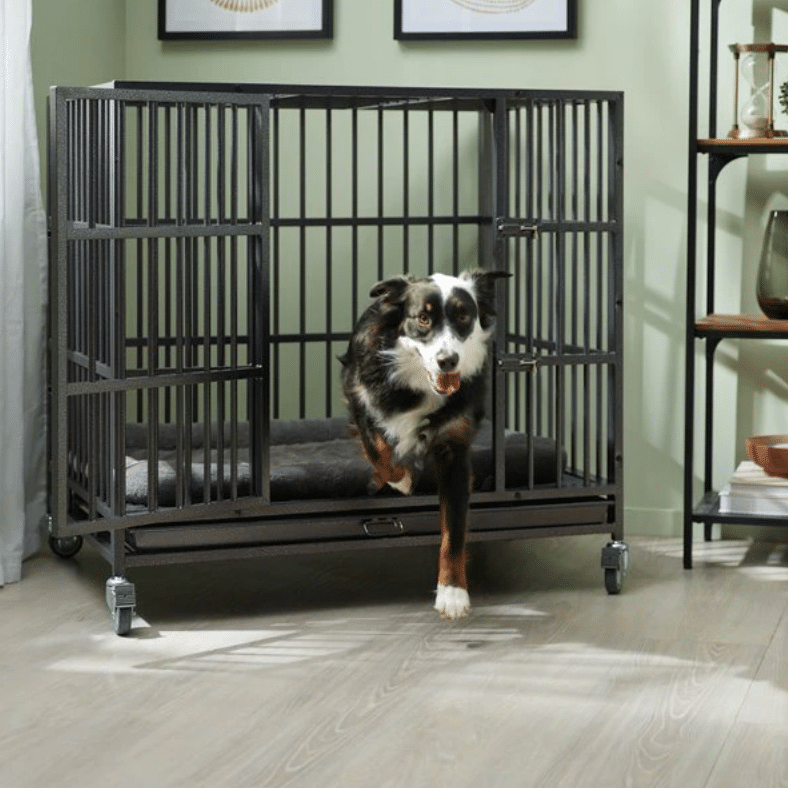
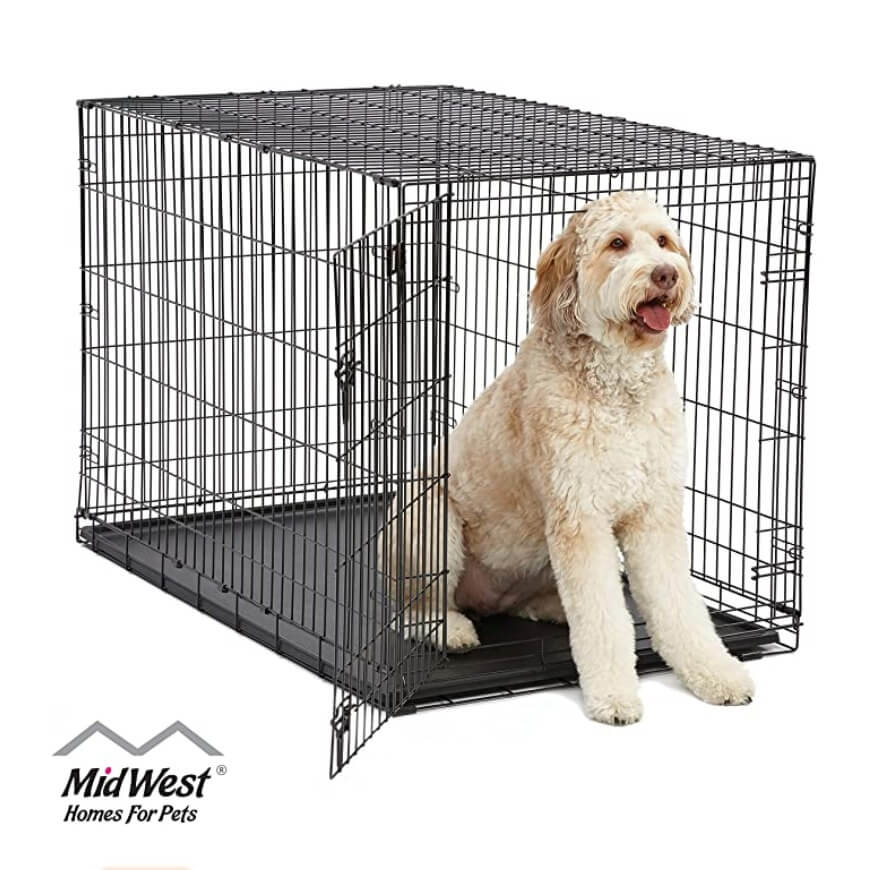
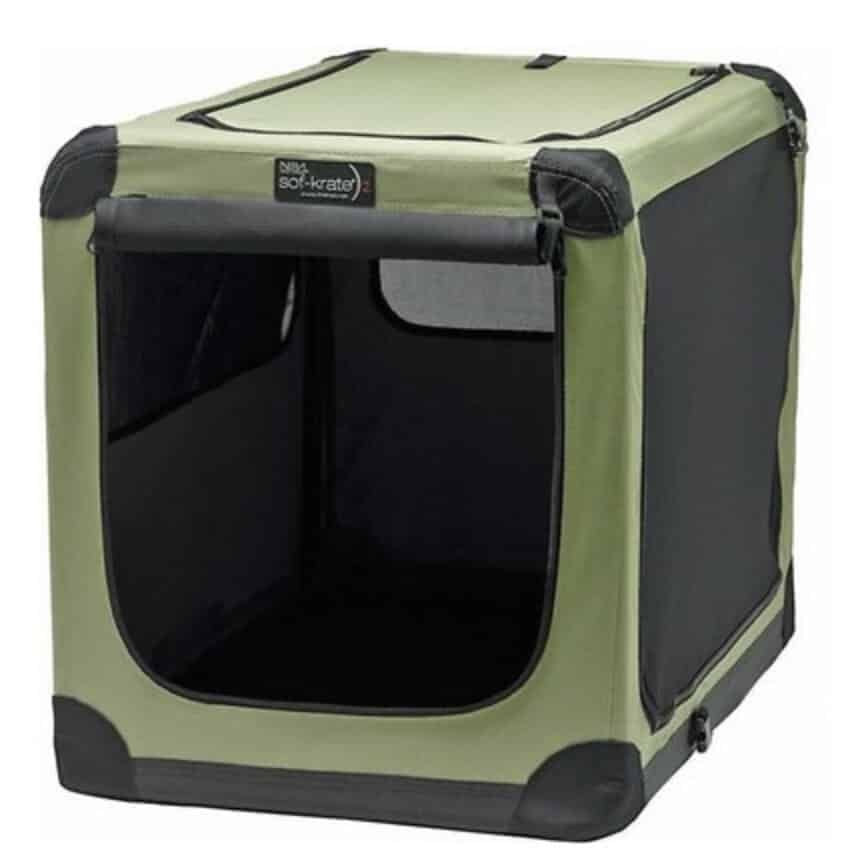
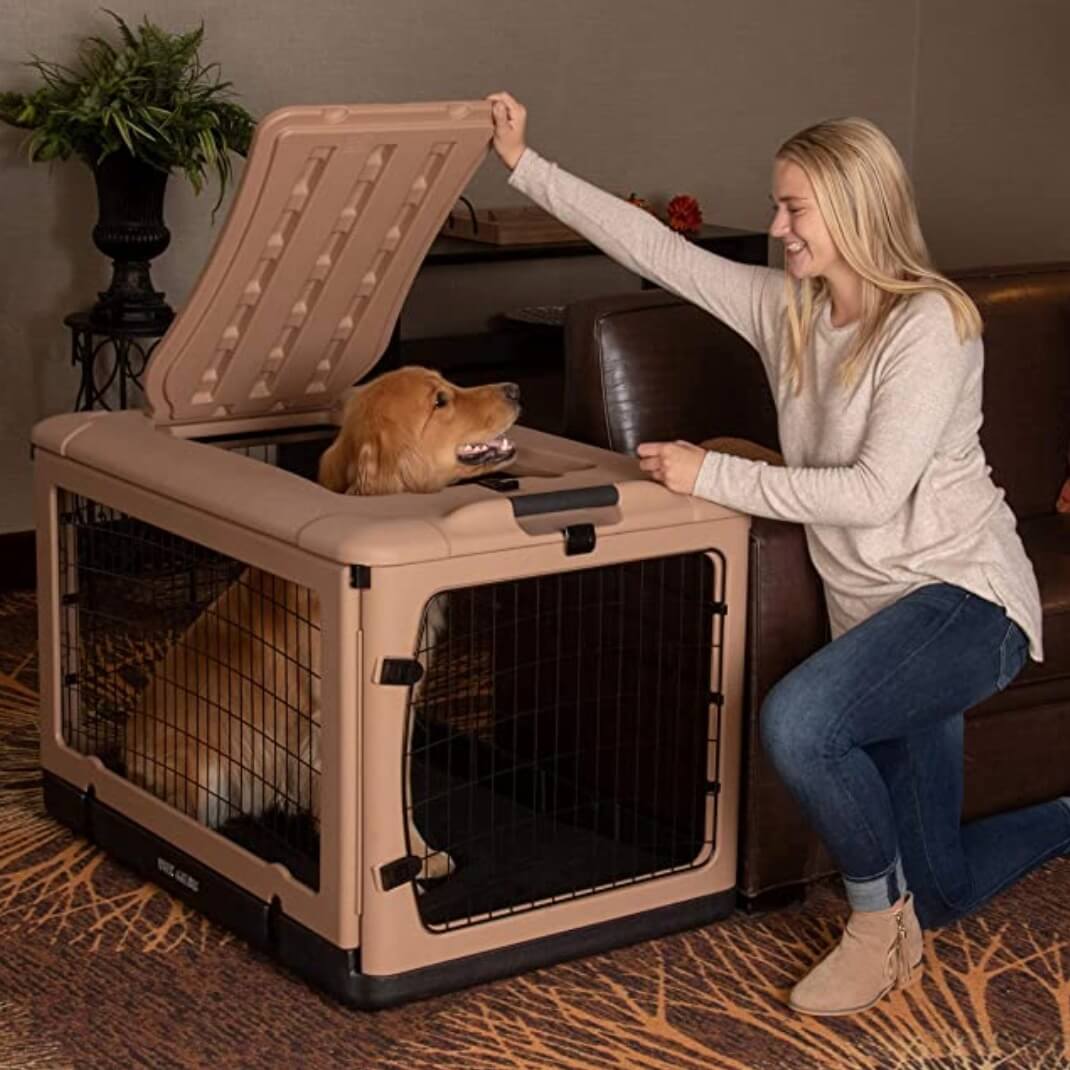
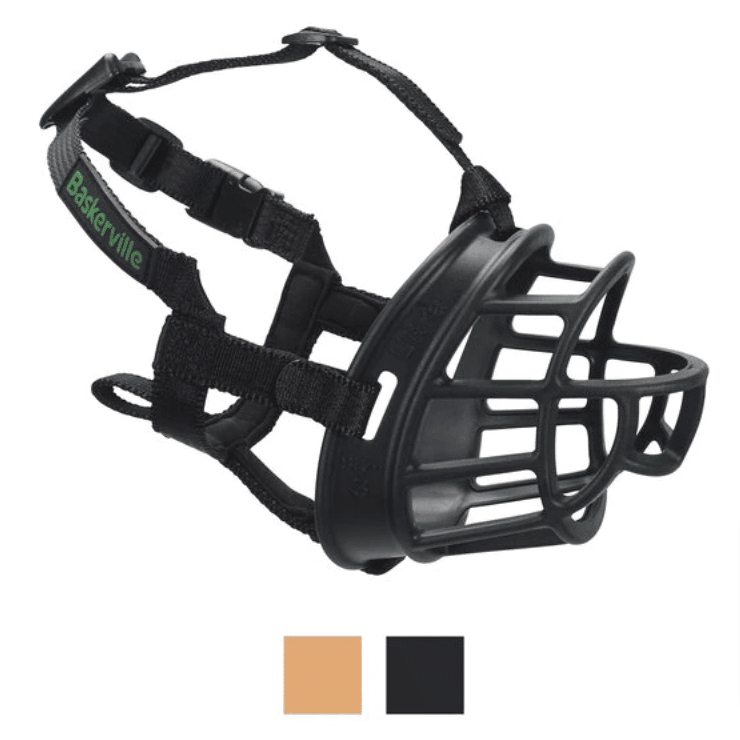
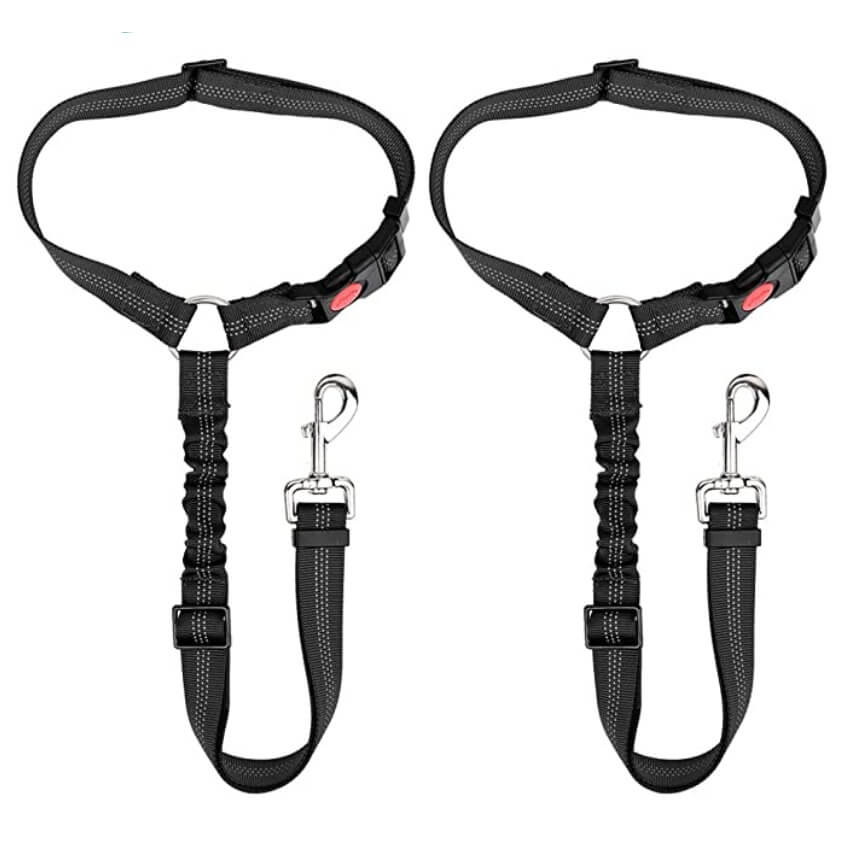
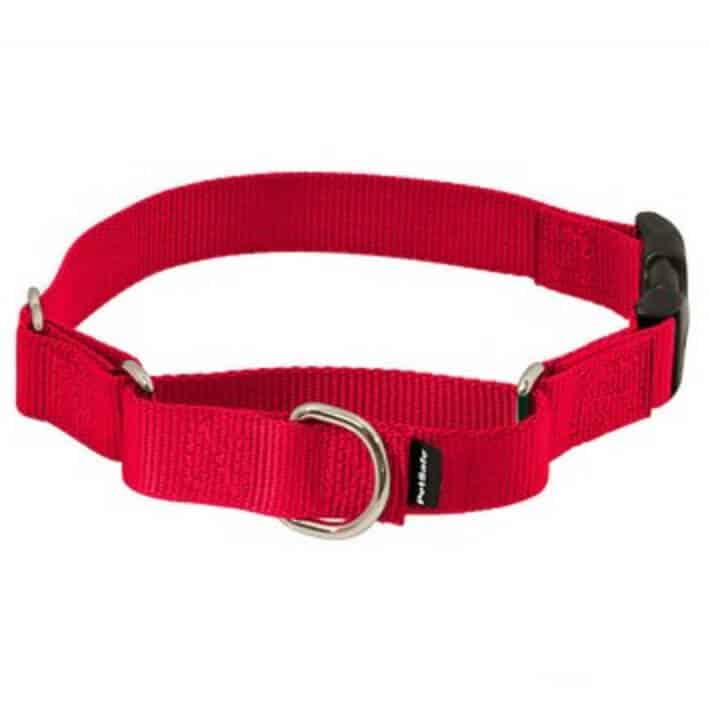
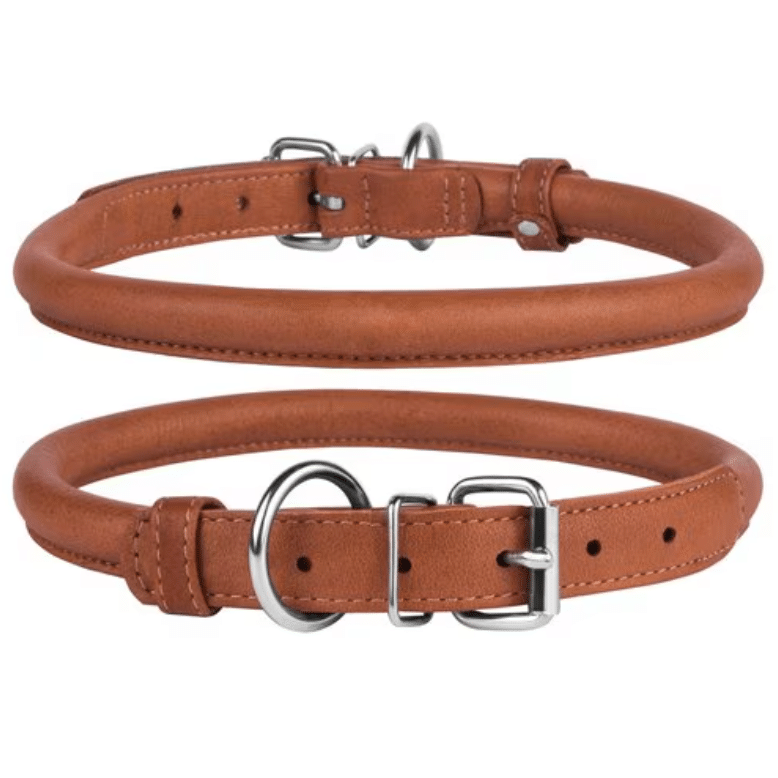
Seek Professional Help If Necessary
If the aggression persists or becomes a serious issue, it may be necessary to consult a professional trainer or behavioral specialist for further advice on how to manage the situation.
If you’re not able to handle the behavior modification process on your own, it’s best to seek out the help of a professional trainer or animal behaviorist who has experience dealing with aggressive dogs. A professional trainer can help set up a training program that is tailored specifically for your dog’s needs and can help ensure that both you and your pup are successful.
Although the tips we provided in this article are definitely useful for preventing dog aggression, they should not replace professional advice from your veterinarian or animal behaviorist. If you have any concerns about your pet’s behavior, it is important to seek professional help.
Try Behavior Medications To Correct Sudden Aggression In Dogs
Finally, don’t be afraid to try behavior medications. Behavior modifying drugs can often be used together with behavior modification techniques to help manage dog aggression. Keep in mind that any medications should be prescribed by your veterinarian, taking into account your dog’s size, age, and health among other things.
Speak with your veterinarian about the various options available and if this might be a possible solution for your pet. It should be noted that the use of medication alone will not fix the underlying cause of why your dog is displaying aggressive behaviors, so it’s important you also work on training methods.
Another thing to keep in mind when using any type of medication is that it may take several weeks or longer before you start seeing any results. It is important to continue working on other aspects such as obedience training and socialization during this time in order for the best results to occur. Moreover, keep a close eye on your dog’s behavior and wellbeing to quickly detect if they’re experiencing side effects from the medication.
The Dos And Don’ts Of Correcting Dog Aggression
The best way to stop and correct dog aggression is through a combination of positive reinforcement training, management strategies (such as crate-training), obedience classes, desensitization (slowly exposing the dog to situations that have been causing aggression), and professional help if needed. It is also important to be mindful of your own actions around the dog, making sure that you do not inadvertently reward aggressive behavior. With the right approach, you can help your dog become less aggressive and create a safe environment for both you and your pet.
- Do use positive reinforcement training
- Do crate train your dog
- Do attend obedience classes
- Do have your dog checked by a vet
- Don’t reward aggressive behavior
- Don’t punish your dog
- Don’t ignore aggressive behavior
Why Is My Dog Being Aggressive All Of A Sudden: Frequently Asked Questions
The most common causes why your dog is suddenly aggressive include fear, pain, frustration, and territoriality. For example, sudden aggression in dogs can sometimes be caused by pain or discomfort that they’re trying to communicate to you. If you can’t identify why your dog is behaving aggressively, it’s important to consult with a qualified veterinarian or animal behaviorist to help get to the bottom of the issue.
There can be a variety of triggers for dog aggression, but some of the most common ones include fear, pain, anxiety, and stress. For example, a dog may become aggressive when they feel threatened. Or, when they are trying to protect their family or territory. They may also become aggressive in highly stimulating situations, such as meeting other dogs or being in loud, busy places. It’s important to be aware of what sets off your dog’s aggression so that you can work on managing those situations.
No, you should not punish your dog for growling at you. In fact, punishing your dog for growling can actually make the problem worse. The act of growling is a warning sign that a dog is uncomfortable or feels threatened. The best course of action would be to give your dog space and remove yourself from the equation. In fact, if you punish your dog for growling, they may stop giving warning signals and start biting instead. This could lead to serious injuries for both you and your pet.
Above all it’s important to remember that punishment is not an effective way to correct aggressive behavior in dogs. Instead, focus on positive reinforcement training and management strategies to help correct the issue.
No, not all dogs become more aggressive as they age. However, it can happen in senior dogs. Some older dogs may start to experience health problems that can lead to aggression. So, it is important to be aware of any changes in your pet’s behavior as they age. Aggression in elderly dogs can also happen because they’re more prone to stress and anxiety, especially whilst big life changes are happening around them. Older dogs may also become more fearful and experience confusion, all of which can contribute sudden aggression in dogs.
The best way to stop and correct dog aggression is through positive reinforcement and behavior modification techniques. It’s important to understand why your dog is displaying aggressive behaviors in the first place, which may require the help of a professional. Positive reinforcement can include providing treats or verbal praise for good behavior, while behavior modification strategies could involve teaching alternative behaviors or redirecting aggressive behaviors to more appropriate outlets.
Additionally, it’s important to establish clear boundaries and provide consistent rules so that your dog knows what is expected of them. You should also make sure that your dog gets plenty of exercise, mental stimulation, and opportunities to safely socialize with other pets and people. All of this helps them overcome aggression and become their best selves.
A female dog can also get angry due to fear, conflict, or illness. They might turn aggressive if they’re feeling particularly defensive or possessive, or if they’re experiencing severe food guarding aggression. In addition to that, some female dogs may also get aggressive with other female dogs both inside and outside of the household as a way of competing for male attention, even if they’re spayed. However, this usually happens very rarely.
Both male and female dogs may start to exhibit aggressive behaviors once they reach sexual maturity and enter the adolescence stage. The key is to train and desensitize your teenage pup as soon as you notice any aggressive behaviors to prevent it from becoming a more serious issue later down the line. And, of course, to get your dog spayed once your vet gives you the green light.
More often than not, dogs can get aggressive with each other when they’re possessive of their food or toys, or become territorial. Of course, a common theme is also that one dog annoys another. If this happens too many times, the other one may ultimately snap after tolerating this behavior for some time. This is most commonly seen when there’s a big age gap, as puppies are notoriously rambunctious and older dogs tend to be more laid back. Moreover, if one dog is spayed or neutered and the other one isn’t yet, this could also lead to aggression.
Why Is My Dog Being Aggressive All Of A Sudden: Final Thoughts
Dog aggression can be a worrying and confusing experience for dog owners, but understanding why dogs experience sudden aggression and being aware of the common triggers can help you manage the behavior in an effective way. By responding appropriately and providing your dog with adequate exercise, mental stimulation, and positive reinforcement techniques, you will be better equipped to stop and correct aggressive behaviors in your pet. We hope that you now have an answer to your question “why is my dog being aggressive all of a sudden?” and what steps can be taken to address and prevent these behaviors.
Learn How to Stop Shavedowns For Good & Keep Matting At Bay!

Discover the PROPER Doodle coat care routine that gets your pup to cooperate…helps you nip tangles in the bud…and gets groomers to do exactly what you want.
Plus, get $520 worth of Bonus Materials for FREE, including:- Doodle Parenthood Community and Support Group ($190 value)
- Custom Doodle Coat Care Plan Lifetime Access ($75 value)
- Easy to Use Doodle Grooming Tracker ($20 value)
- And MORE!

